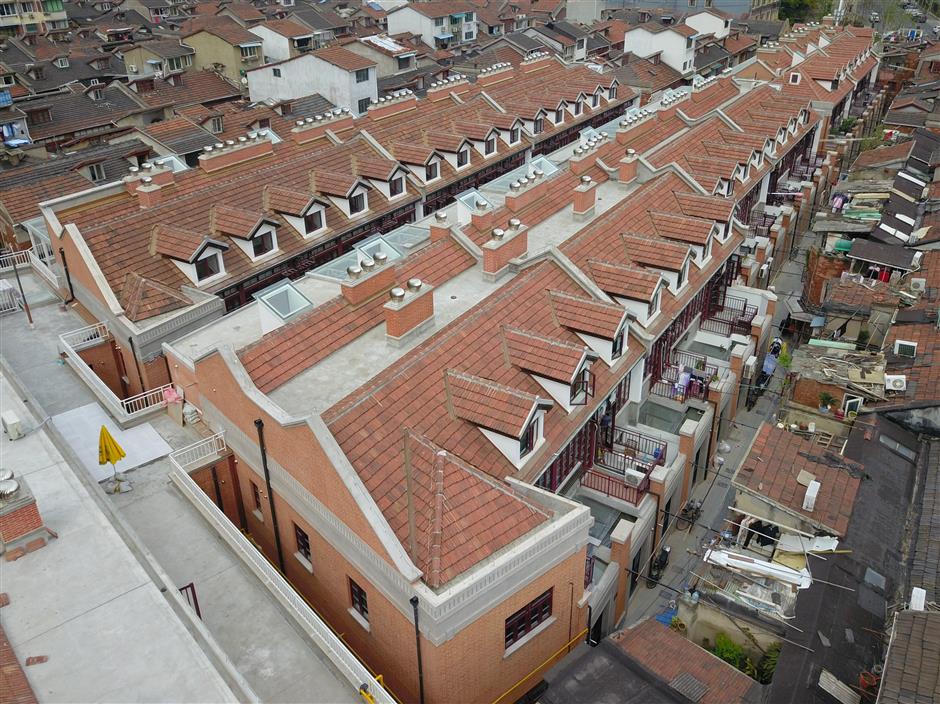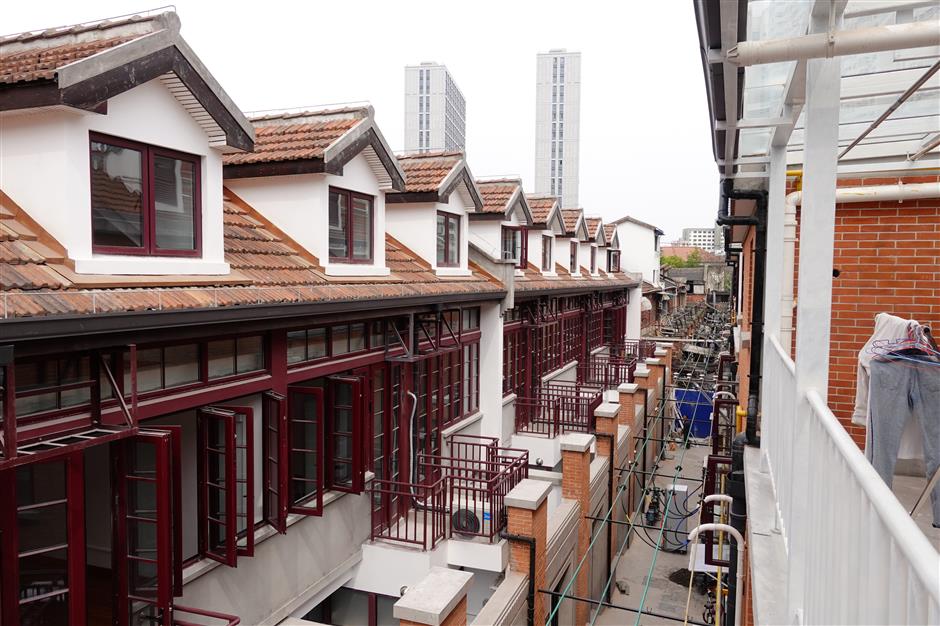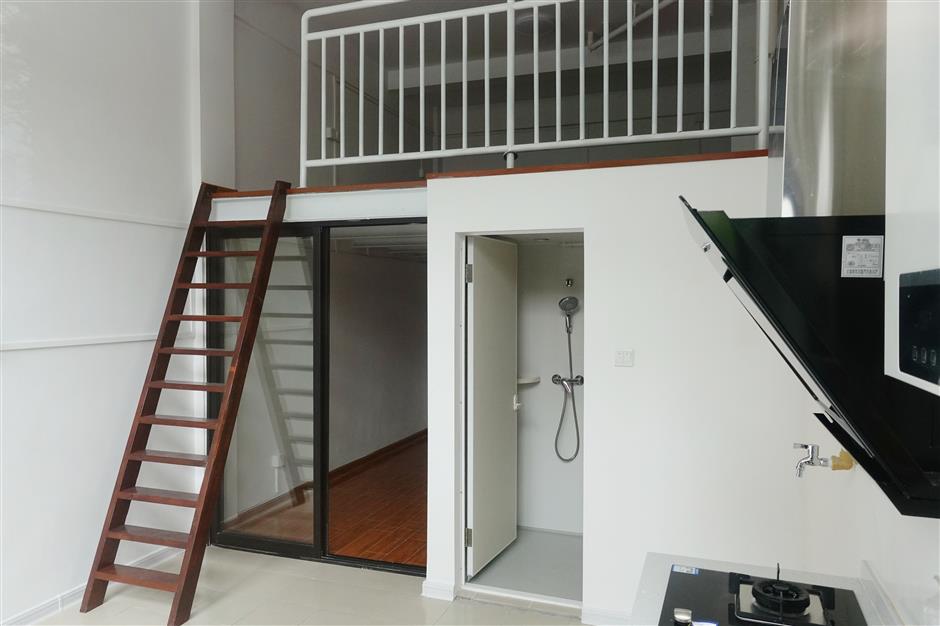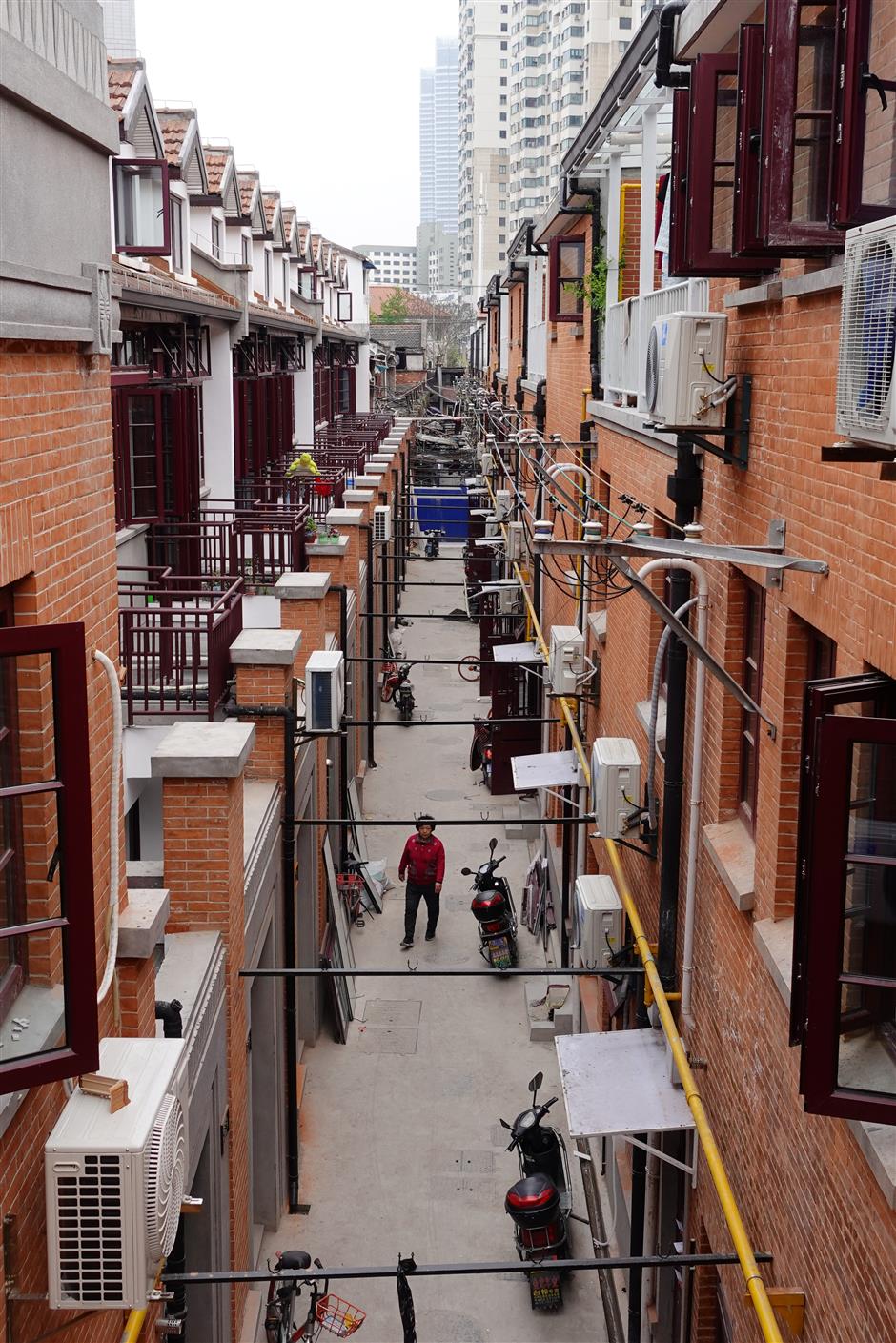Renovated shikumen to accommodate white-collar workers

The Chunyangli neighborhood in Hongkou District is a classic lane-style shikumen compound.
A downtown shikumen complex will be home to both white-collar workers and the original residents as a result of a major renovation.
The Chunyangli neighborhood, built around 1921 in Hongkou District, is the site of the city’s first trial project aimed at modernizing the unique stone-gated buildings while preserving their historic appearance.
Work has been completed on the initial two phases of the project. Over 220 households were temporarily relocated. Most residents have now moved back into their refurbished homes.
Those wanting to rent them out can do so through a government-backed leasing company. This is an initiative of the district government to prevent the neighborhood deteriorating again because of low-end tenants or a single household being rented to a group.
It will also solve a housing shortage for white-collar workers in the North Bund riverside business hub, which is only 10 minutes walk away.
As a key site for Hongkou’s development, the North Bund area along the Huangpu River has attracted more than 4,500 shipping companies and 1,200 financial companies and institutions.
“Young office workers are welcome to be our neighbors,” said Hong Guozhen, a senior resident who is about to move back to her renovated apartment with her husband.
“I will ask them to dinner if they are too busy to cook themselves,” she said.
The historical neighborhood has 23 shikumen townhouses with 1,181 households. Some 60 percent of the owners had long rented out their apartments and lived elsewhere.

The Chunyangli neighborhood was listed as a protective heritage zone by the city government in 2016. The district government launched the innovative renovation in 2017.
The Beiwaitan, or North Bund Subdistrict, has invited a third-party leasing company, the Chunyangli Property Development Co, to take control of the leasing services.
The “leasing butler service” takes charge of the decoration, renting, maintenance and other daily services to the tenants for the house owner without charging an agency fee. Residents can hand over the apartments to the company for a decade. A reasonable rental has been promised.
“We used to be bothered by various subtle issues from the tenants,” Zhu said.
“Now I only need to sit at home and receive the rentals every quarter.”
She handed over the keys to her property right after receiving it following the second phase of renovation.
The apartments for rent will be mainly targeted at white-collar workers between 25 and 40 years old, said Yang Jun, general manager of the company. The tenants can report any problems to the company around the clock, such as repair requests or utility fee payments, he said.
“The inhabitants will bring new life to the old neighborhoods,” Yang said.
The surrounding businesses are also expected to be upgraded thanks to the young residents, he added.
The Chunyangli neighborhood at 211 Dongyuhang Road is a classic lane-style shikumen compound, listed as a protective heritage zone by the city government in 2016.
The district government launched the innovative renovation in 2017.
A shikumen-style building is a combination of Western architecture and China’s traditional courtyard structures. They were first built in the 1850s by Europeans living in foreign concessions and are unique to Shanghai.

Each household in the Chunyangli neighborhood gains an extra 3.5 square meters thanks to clever redesign.
The city’s major preservation strategies for the shikumen neighborhoods are represented by four projects — Xintiandi, Tianzifang, Jianyeli and Cite Bourgogne.
These projects either converted the residential community into commercial hubs like Xintiandi or Tianzifang, or kept the original residents in decaying houses, mostly without private kitchens or toilets.
The ongoing Chunyangli project presents another solution, keeping the traditional lifestyle but improving the structure.
The fully government-subsidized project replaces the former wooden and brick inner structures — that are rotten, pose a fire risk, and have mice and cockroach infestation — with steel beams and other fire-resistance materials.
The stone gate, the most iconic part of the shikumen building, and the exterior walls are preserved.
Original construction materials such as the red bricks and wooden doors are being reused as much as possible, said Xing Zhuhua, chief designer of Zhang Ming Architectural Design Firm, which is in charge of the renovation project.
Each household can gain an additional 3.5 square meters of space on average and the layout has become more practical, according to Xing, whose plans were tailor-made for each household.

The inner structure of the Chunyangli townhouses has been fully renovated.
Chen Minxin, 67, was among the first of the residents to move back to the renovated apartments in early 2018.
Thanks to well-thought-out designs, her 50-square-meter apartment now has three bedrooms and a sitting room, with private bathroom and kitchen.
“By walking 10 minutes in the morning, I can go to the waterfront to do exercises,” Chen said. “Within five minutes, we can reach the Shanghai General Hospital for any illness.
“A rat cage was once indispensable to each Chunyangli household, but we no longer need to worry about that.”
Furthermore, the old neighbors who have been living together for decades can still visit each other, Chen added.
The trial project is expected to be expanded to other local shikumen neighborhoods, which enjoy protection status but are beset by poor conditions, according to the urban restructuring department of the city’s housing authority.
Shanghai has more than 8 million square meters of lane-style houses built half a century ago within the Inner Ring Road. Of this, about 7 million square meters are earmarked for protection due to their historic value.
The city government plans to renovate 2.4 million square meters of old residential buildings like Chunyangli by 2020.
Most lane-style buildings will be preserved, while the remainder, deemed to have no heritage value, will be demolished.

The Chunyangli neighborhood















